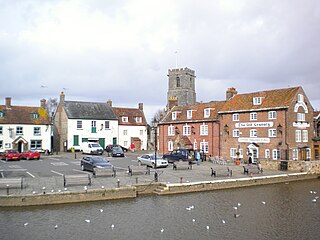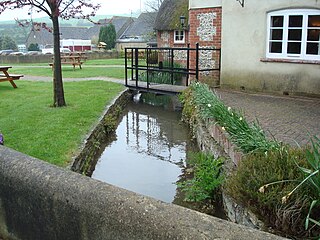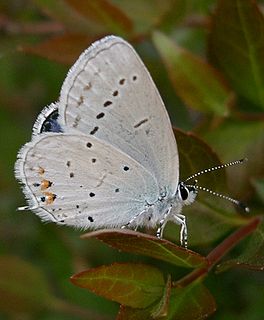
The River Frome is a river in Dorset in the south of England. At 30 miles (48 km) long it is the major chalkstream in southwest England. It is navigable upstream from Poole Harbour as far as the town of Wareham.

Purbeck was a local government district in Dorset, England. The district was named after the Isle of Purbeck, a peninsula that forms a large proportion of the district's area. However it extended significantly further north and west than the traditional boundary of the Isle of Purbeck along the River Frome. The district council was based in the town of Wareham, which is itself north of the River Frome.

The A31 is a major trunk road in southern England that runs from Guildford in Surrey to Bere Regis in Dorset.

The A35 is a road in southern England, connecting Honiton in Devon and Southampton in Hampshire. It is a trunk road for some of its length. Most of its route passes through Dorset and the New Forest. It originally connected Exeter and Southampton, the original A35 ran along what is now the A3052 joining the present road at Charmouth.

Puddletown is a village and civil parish in Dorset, England. It is situated by the River Piddle, from which it derives its name, about 4.5 miles (7 km) northeast of the county town Dorchester. Its earlier name Piddletown fell out of favour, probably because of connotations of the word "piddle". The name Puddletown was officially sanctioned in the late 1950s. Puddletown's civil parish covers 2,908 hectares and extends to the River Frome to the south. In 2013 the estimated population of the civil parish was 1,450.
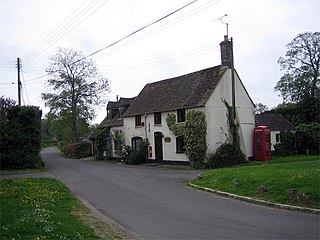
Bloxworth is a village and civil parish in the Purbeck district of Dorset, England, situated in Wareham Forest on the A35 road 5 miles (8 km) west of Poole. In the 2011 census the civil parish had 80 households and a population of 200. Bloxworth Heath is part of Wareham Forest and is home to Woolsbarrow Hillfort.
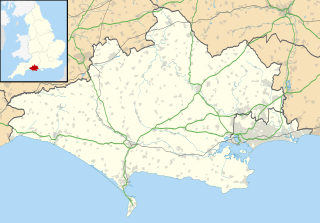
Wareham Forest is an area in Dorset, England, consisting of open heathland, including Decoy Heath and Gore Heath, and plantations of conifers such as Morden Heath and Bloxworth Heath. The site is overseen by the Forestry Commission for conservation and recreation. Situated next to the A35 road between Dorchester and Poole; the forest provides a home for sika deer, the Dartford warbler and a population of sand lizards.
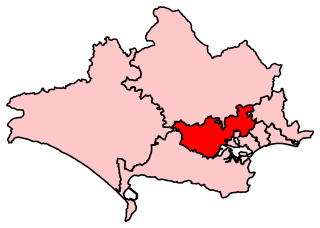
Mid Dorset and North Poole is a constituency represented in the House of Commons of the UK Parliament since 2015 by Michael Tomlinson, a Conservative.
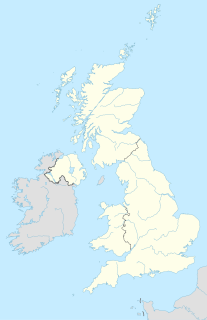
The South East Dorset conurbation is a multi-centred conurbation on the south coast of Dorset in England. The area is rapidly becoming an amalgamation with the area of South West Hampshire immediately on the fringe of the newly formed New Forest National Park. The main population centres are Bournemouth, Poole and Christchurch; however, the urbanised area spreads as far east as Barton on Sea in Hampshire. There are a number of satellite towns peripheral to these main urban centres. In clockwise rotation these include: Wareham, Upton, Wimborne, Ferndown, Verwood and Ringwood (Hampshire). The urban area is generally surrounded by a green belt.

Shitterton is a hamlet in Dorset, England. It has attracted worldwide attention for its name, which dates back at least a thousand years and means "farmstead on the stream used as an open sewer". Shitterton has frequently been noted on lists of unusual place names. The hamlet includes a collection of historic thatched buildings dating back to the 18th century and earlier.

Upton Heath is one of the largest remaining fragments of a heath that once stretched across central southern England from Dorchester to Christchurch and beyond. Today it is confined to an area immediately west of Poole, much of which is protected. From the Heath there are views across Poole Harbour, Corfe Castle and the Isle of Purbeck.
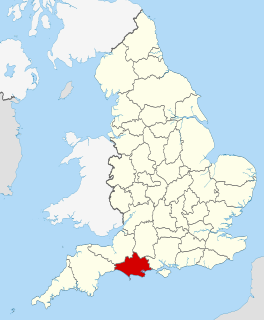
Dorset is a county located in the middle of the south coast of England. It lies between the latitudes 50.512°N and 51.081°N and the longitudes 1.682°W and 2.958°W, and occupies an area of 2,653 km². It spans 90 kilometres (56 mi) from east to west and 63 kilometres (39 mi) from north to south.

The Dorset Heaths form an important area of heathland within the Poole Basin in southern England. Much of the area is protected.

The Stonehill Down Nature Reserve is a downland nature reserve on the Purbeck Hills in the county of Dorset, England. It is managed by the Dorset Wildlife Trust.

Woolsbarrow Hillfort is a hillfort on Bloxworth Heath in the district of Purbeck in the county of Dorset, England. It dates to the period from the Late Bronze Age to the Early Iron Age and is classed as an ancient monument. Despite the hillfort only being at an altitude of 220 feet (67 m) it is said to "dominate the surrounding heathland."

Decoy Heath is an area of open heathland and bog forming part of Wareham Forest west of the Poole-Bournemouth conurbation in south Dorset, England. It is part of the Dorset Heaths.

